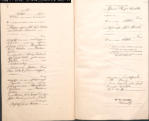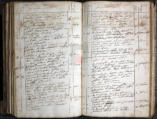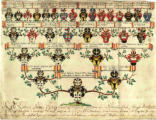The
„inofficial“
surname,
at
first
mostly
used
verbally
during
day-to-day
interaction
and
in
the
bearer‘s
closer
social
environment,
through
continuous
application
beyond
the
village‘s
boundaries
and
across
the
region,
soon
was
commonly
recognised.
As
soon
as
burocracy
reached
the
bearers
living
environment,
the
family
name
with
notation
in
official
documents finally became official.
It
was
the
aristocracy,
who
started
documenting
its
family
members in nobility registries and genealogical trees.
As
of
the
14th
century,
it
was
the
church,
in
person
the
local
pastor
or
priest,
who
started,
either
as
ordered
by
his
sovereign
or
from
own
motivation,
to
register
first
and
last
names
of
each
individual
member
of
the
community
in
church
books
on
the
occasion
of
birth/baptism,
communion
or
confirmation,
as
well
as
marriage
and
death,
in
chronological
order
and
regardless
of
descent,
gender
and
wealth.
Only
centuries
later,
such
a
registration
became
mandatory.
Accordingly,
for
a
long
period
of
time,
church books were the sole record of existence of an individual.
For
example,
only
since
1
January
1876,
registration
and
recording
of
birth,
marriage
and
death by registrars in so called civil registries was officially introduced in the German Empire.

All Rights Reserved © KBZ 2021 - Last updated: 28 April 2023

About the Family‘s Origin

Excursus - About Origination and Documentation of Family Names


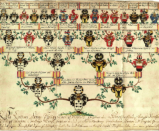
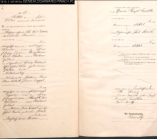
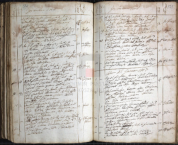







All Rights Reserved © KBZ 2021 - Last updated: 28 April 2023
E x c u r s u s
About Origination and Documentation of Family Names
About the Family‘s Origin




The
„inofficial“
surname,
at
first
mostly
used
verbally
during
day-to-day
interaction
and
in
the
bearer‘s
closer
social
environment,
through
continuous
application
beyond
the
village‘s
boundaries
and
across
the
region,
soon
was
commonly
recognised.
As
soon
as
burocracy
reached
the
bearers
living
environment,
the
family
name
with
notation
in
official
documents
finally
became official.
It
was
the
aristocracy,
who
started
documenting
its
family
members
in
nobility registries and genealogical trees.
As
of
the
14th
century,
it
was
the
church,
in
person
the
local
pastor
or
priest,
who
started,
either
as
ordered
by
his
sovereign
or
from
own
motivation,
to
register
first
and
last
names
of
each
individual
member
of
the
community
in
church
books
on
the
occasion
of
birth/
baptism,
communion
or
confirmation,
as
well
as
marriage
and
death,
in
chronological
order
and
regardless
of
descent,
gender
and
wealth.
Only
centuries
later,
such
a
registration
became mandatory.
Accordingly,
for
a
long
period
of
time,
church
books
were
the
sole
record of existence of an individual.
For
example,
only
since
1
January
1876,
registration
and
recording
of
birth,
marriage
and
death
by
registrars
in
so
called
civil
registries
was
officially introduced in the German Empire.

